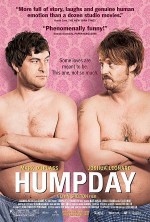It took about forty-eight hours for me to tumble to the fact that Quentin Tarantino's superb Nazi-stomping fantasy, Inglourious Basterds would occupy a niche similar to Kaufman's Synecdoche, New York and the Coens' No County for Old Men did in 2008 and 2007, respectively. That is, while it may not be the best film of the year, it has prompted me to a greater quantity and deeper quality of reflection than any other cinematic offering of recent vintage. Happily, it took only a week or so for me to discover that Basterds has also provoked a comparable level of deliberation from just about every American film writer and blogger worth a damn (not that I count myself among that number.) The poobahs of my favored haunts—GlennKenny, Tim Brayton, Jim Emerson, Kevin J. Olson, Charles Bowen Jr., Sam Juliano—and their commenters are all in fine form, whether their assessment is positive or negative. However, a particular shout-out needs to go to Dennis Cozzalio of Sergio Leone and the Infield Fly Rule and Bill R. of The Kind of Face You Hate, who have offered up a meticulous, marathon exchange about the film (Part 1, Part 2, Part 3, Part 4). The tone of their back-and-forth has been unabashedly gushing (as it should be), but the conversation has nonetheless been vigorous, enlightening, and often pointed, especially where the film's lonely detractors are concerned.
In that spirit, I want to expand on some thoughts that have been rattling around in my cranium since I authored my review, particularly since I've now had a chance to view Basterds for a second time and also to peruse a fraction of the excellent commentary that's been pouring forth from the Internet's tubes. [SPOILERS BELOW]
***
Many pixels are being expended on the topic of Inglourious Basterds' morality, or lack thereof. Interestingly enough, the furor seems to be as much about the response of some critics (*cough* Jeffrey Wells *cough*) to the film's violence as it is about Tarantino's own notorious inscrutability on the matter. I find myself mostly sharing Dennis Cozzalio's stance on this, which is to say that my own feelings about Basterds' violence are comprised of a heaping helping of giddy enthusiasm with a twinge of nagging discomfort. However, while I can't say that I share Bill R.'s full-throated enthusiasm for the film's violence, his commentary on the topic has prompted me to examine my own reactions to Basterds more carefully. I still stand by my assessment that the gleeful bloodthirstiness of the Basterds' "work" (and Shosanna's revenge scheme, to a lesser degree) has an undercurrent of moral ambiguity. I can't deny that I feel some uneasiness at the prospect of reveling in the execution and mutilation of German enlisted men and civilians. Is it telling that I never had so much as a twinge of remorse for the eighty-eight (or so) ninja bodyguards that The Bride mercilessly hacked her way through in Kill Bill, Volume 1, even though many of them were guilty of nothing more than fervent loyalty to their mistress? Perhaps this distinction depends on the particular cartoonish quality to Kill Bill's violence in the House of Blue Leaves sequence, but I think there's something else going on.
Nazi stories seem to have a particular capacity for evoking considerations of violence, culpability, and racism. I suspect that when confronted with the swastika in either a historical or fictional context, any person will dwell, however briefly, on their own morality, and how easily human beings set aside decency in the name of tribalism, jingoism, and pure sadism. Of course, in a film like Inglourious Basterds, this has the effect of prompting second thoughts about wishing violence on the very monsters that prompted those second thoughts in the first place. Tarantino equivocates quite a bit about this in the film. He coaxes us to whoop with delight as Nazis are machine-gunned and roasted alive, even as he presents us with a Nazi audience cheering as on-screen Allied soldiers are picked off like rabbits at the Nation's Pride premiere. It's hard not to feel a little sting at the comparison. On the other hand, there's Shosanna's fate, wherein her momentary pity for Zoller gets her brutally murdered. This suggests that whatever hesitation we feel for dishing out punishment to the deserving is softhearted folly, and likely to have nasty consequences for us. No doubt some authoritarian-minded Neanderthal will latch onto this as a validation for contemporary American warmongering and torture, but Tarantino has never been so overtly political. His provocations are far deeper, striking at the intersection of pop culture and unexamined social values. Bottom line, I don't think that Tarantino is offering any easy messaging in Basterds, certainly nothing in the vein of Death Proof's rather uncluttered (yet still misconstrued) indictment of misogyny and male entitlement.
***
One thing that struck me square between the eyes on a second viewing is how much Inglourious Basterds is interested in celebrity, as a plot point, motif, and theme. Consider that nearly every major character in the film—with the conspicuous exception of Shosanna—is well-known in certain circles. Aldo Raine, Donny Donowitz, Hugo Stiglitz, Hans Landa, Fredrick Zoller, Bridget von Hammersmark, and even Smithson "The Little Man" Utivich are all celebrities in one way or another, and much of the film's intrigues are related to their identities and reputations. And, of course, the film also includes the real-world figures of the Third Reich. This current of celebrity is consistent with Tarantino's filmography, which has often been concerned with identity, and especially with its capacity to bestow power on the one hand and to confine and suffocate on the other. Tarantino's exploration of identify achieved its pinnacle in Kill Bill, wherein a wronged woman's road to vengeance becomes an exploration of the self, but it can also be observed as a major component of Reservoir Dogs and Pulp Fiction.
While Tarantino's characters have always been larger than life, he's never before trafficked in a cast of characters that is consistently renowned within their own universe. This is more than appropriate, given Inglourious Basterds' conspicuous fixation on cinema. Andrew Dominik's casting of Brad Pitt in The Assassination of Jesse James by the Coward Robert Ford was a self-consciously clever feat that paid significant dramatic dividends, and Tarantino seems to be playing a related game here by tapping the tabloid darling to portray Aldo Raine. Yet, consistent with his prankster spirit, the director casts Pitt not as the steely man of war, but as a broadly comical good ol' boy, and not even in the lead at that!
Few commentators have observed that the Basterds' questioning of their Nazi captives in Chapter 2 is a callback to Hans Landa's interrogation of LaPadite in Chapter 1, and moreover that both confrontations hinge on the characters' reputations and infamy. Landa seems genuinely interested in whether LePadite knows of him, and specifically whether his moniker, "the Jew-Hunter," is known to the dairy farmer. Likewise Aldo Raine asks his Nazi prisoner if he has heard of Donny, Hugo, and Aldo himself. Both scenes also hinge on the subject giving up some vital piece of information, although the threat of violence is much more explicit for the Nazis the Basterds have under their thumbs. It's a bold twinning, as it overtly links the menace that Landa cultivates about himself with the fear that the Basterds aim to inspire among the Germans ranks. While Tarantino is drawing a line of connection between Landa and Raine, and therefore critiquing his own (and our own) glee at the Basterds' brutal methods, he's not really posing the comparison as a moral equivalency. This is made clear late in the film, when Landa expresses a kind of professional respect for Raine, and seems crestfallen when the American lieutenant fails to exhibit a reciprocal admiration. Raine won't, of course, because he's a practical sort, and not preoccupied with abstractions like honor. More significantly, Raine regards Landa as a moral monster, and therefore he is undeserving of any respect at all.
***
Mélanie Laurent has received a lot of attention—and deservedly so—but can we talk for a moment about the luminous Diane Kruger and her portrayal of Bridget von Hammersmark? Kruger was colorless eye candy as Helen of Troy in Wolfgang Petersen's 2004 swords-and-sandals epic, and apparently she's been a recurring character in those National Treasure films, which I've studiously avoided. Certainly, I had seen nothing that prepared me for her deliriously captivating performance in Basterds. Tarantino deserves credit for scripting Bridget as one of the most fascinating and most precisely drawn characters in the film, and also for his well-established ability to bring out the best in his performers. Let's not short-change Kruger, however. She slips effortlessly into the role of a 1940s screen diva, right down to the poised yet relaxed way she perches on her chair with cigarette and coquettish smirk. Kruger is the picture of Teutonic sparkle, but the allure of Bridget isn't simply due to the actress' appropriation of the Marlene Dietrich look. Watch the whirl of emotions that Kruger permits to peek from beneath Bridget's mask of droll, eager-to-please sweetness. Listen to her carefully during the now-notorious tavern scene, and you'll see how cunning and fearless Bridget is, and also how apparent it is that Archie Hicox and the Basterds, not her, are the ones who let their anxiety get the better of them. Every step of the way through that scene, Bridget attempts in vain to keep the Allied spies from panicking, to maintain a sense of calm and even warmth. It's not so much that Bridget is a good liar (she isn't), but that she knows how to use her looks, her charisma, her fame, and her audience's expectations to her advantage, to smooth out things that might otherwise look suspicious. And, good Lord, what a death scene! If any viewer harbored a speck of sympathy for Landa, surely his unusually graphic strangulation of Bridget banished it? (The slaughter of the Dreyfus family should have, but no matter...) Forget the film's later re-writing of history: Tarantino exhibits epic chutzpah in presenting an act so violent and overtly misogynistic without flinching from it. Only the brutal daylight stabbings in Fincher's Zodiac have come close in recent memory to banishing the sex appeal of fictional violence.
***
Wandering outside the film blogging world for commentary on recent releases is always an enterprise fraught with peril, but Amanda Marcotte at Pandagon has long been providing consistently enlightening insights into pop culture from a feminist perspective amid her postings on reproductive rights and other issues. It was Amanda's take on Death Proof that got me to appreciate its sexual politics, and has had a strong influence on the way I approach the film. Her assessment of Inglourious Basterds is no less enlightening, and while her writing at Pandagon is in the conversational style of political blogging, she uses the mode she's familiar with to raise some interesting points. Most fascinating in my mind is Zoller's embodiment of the Nice Guy archetype that has long been an object of discussion among socially-minded Third Wave feminists. Tarantino addressed the Nice Guy phenomenon with a gentler hand in Death Proof, but Zoller represents a much more frank repudiation of the obsequious, resentful sexist. The Shosanna-Zoller subplot seems designed to resonate with any woman who has ever had to parry a sycophant who refused to take "No" for an answer. The rather unfair characterization of Tarantino as a purveyor of a hyper-masculine sensibility has also been a stubborn one, to the point where four (or five) consecutive films featuring assertive female protagonists have been insufficient to dispel it. Although not all of these films pass the Bechdel Test, I suspect it's Tarantino's obsession with genre and his awestruck attitude toward female sexuality that ultimately hinder him being taking seriously as a male ally of feminism. That said, notice how sympathetic Basterds is to Shosanna's utterly no-nonsense stance towards Zoller. She never gives him an inch, and Zoller's frustration builds until his underlying entitlement boils over into violent rage. The viewer never really trusts Zoller either, and not just because he's a Nazi and a Goebbels protege. It's the false modesty during his early scenes that made my Spidey-Sense tingle, if only because it's so unusual to see a character take such a stance in a Tarantino film. The trait that seems to hold for almost all of Tarantino's characters is their swagger, whether warranted or not. Who was the last modest Tarantino character? Poor Marvin from Pulp Fiction? This more than anything signaled to me that Zoller's initial humility about his fame was a disingenuous strategy to impress Shosanna. And, again, what does Shosanna's momentary softening for the schmuck get her? A brutal, agonizing death. As much as Shossana's ugly demise seems an affirmation of the film's merciless Nazi-snuffing, it equally represents a warning never to let your guard down around your creepy wannabe-boyfriend.













